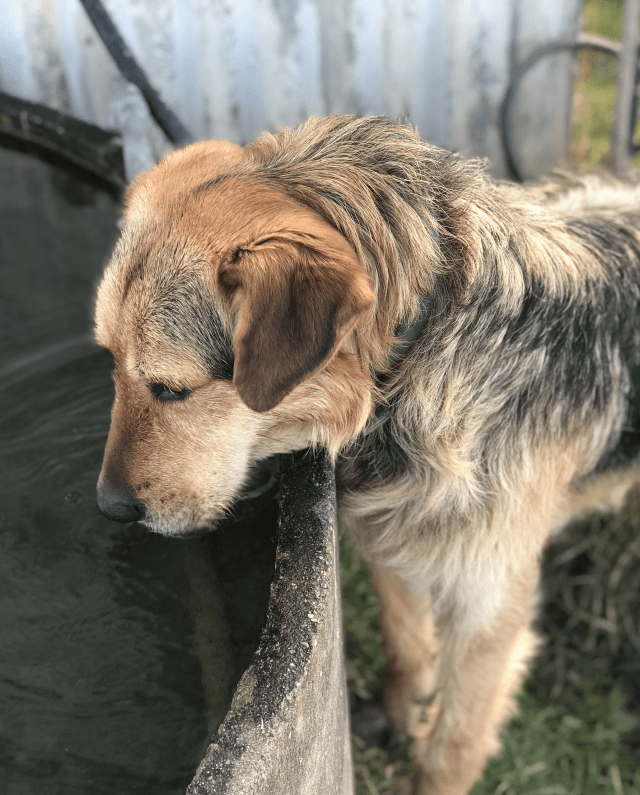The summer brings some heavy workloads on farms and high energy requirements for farm working dogs. Feed them a high fat, high protein diet to reduce musculoskeletal injuries and increase endurance.
Burning all that energy creates increased body heat which becomes more difficult for them to regulate in hot weather. They only have a few sweat glands, in the pads and nose, and depend on evaporative cooling of exhaled moist air, panting, and air movements over the body surface. All of these involve the loss of body water.
To maintain hydration, your dogs may need over 40% of their total body water each day during heavy work periods! Water requirements for work on hot days are likely to be at least 2.5L for a Huntaway and 1.5L for a Heading dog.
Managing the heat
Allow your team regular opportunities to drink and rehydrate throughout the day (and night). Consider carrying some water in vehicles if access to drinking water is likely to be difficult or infrequent.
Watch for early signs of heat stress, such as starting to underperform, slow return from a run, ignoring commands, lying down, and seeking shade.
Significant heat stress will begin as body temperature increases, with symptoms such as wet pads, increased respiration rate, panting, reluctance to move, drooling, vomiting and disorientation.
Heat stroke is increasingly likely if the dog has a prolonged elevation of body temperature above 40.6 °C, with the rapid onset of multi-organ dysfunction, organ failure, collapse, and death.
If you have a dog in heat stress, phone the veterinary clinic to arrange urgent veterinary attention AND immediately start to cool the dog down with these on-farm first-aid steps:
Take care if using troughs and creeks. Do not fully submerge your dog because they may be neurologically impaired and could inhale water and drown.
Take your dog out of direct sun and into deep shade, if possible.
Wet their coat and skin thoroughly with cool water. Soaking towels can be a way to disperse water to the skin. Remove the towel to allow air movement and evaporation. Repeat the process...
Do not use ice as this may cause shock, rebound hypothermia, and further organ injury in an already compromised dog.
Transport them as soon as possible for veterinary care.
Some key things to remember to avoid heat stress include:
Never leave a dog inside a vehicle in warm weather.
Plan work schedule to avoid extreme heat of the day.
Keep their hair clean and knot free.
Maintain flea and worm control treatments for healthy skin and better thermoregulation.
Feed a consistent diet during heavy work times as a dog with gastrointestinal upset will be more susceptible to heat stress.
Conditioned dogs have better thermoregulation - be watchful of young dogs on their first big outings.

